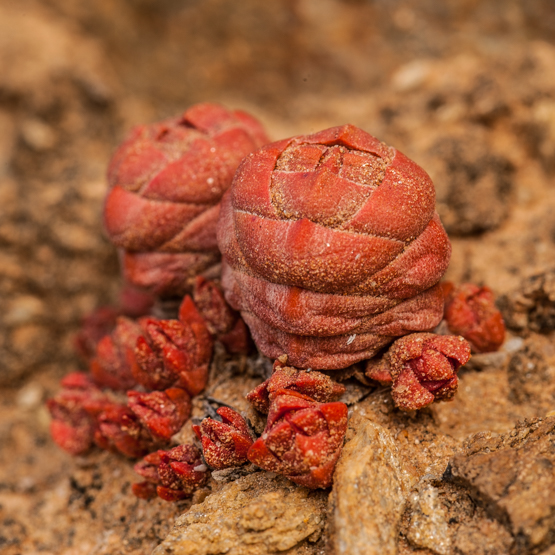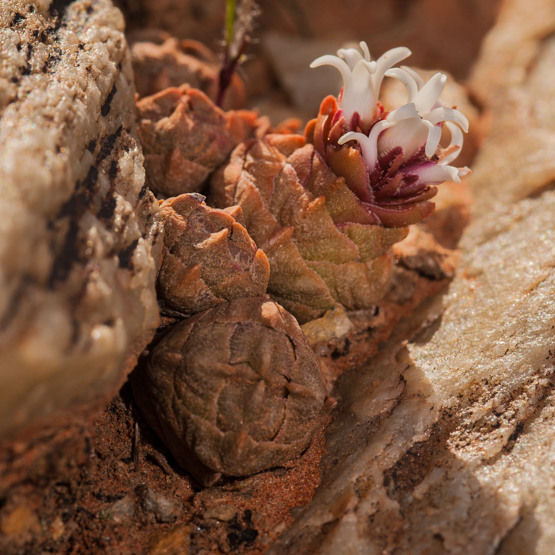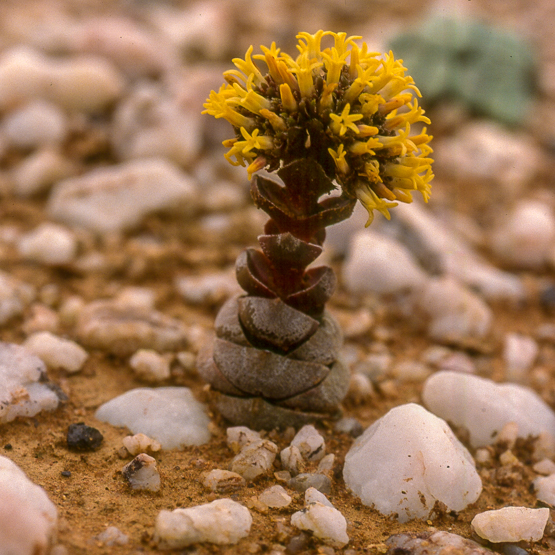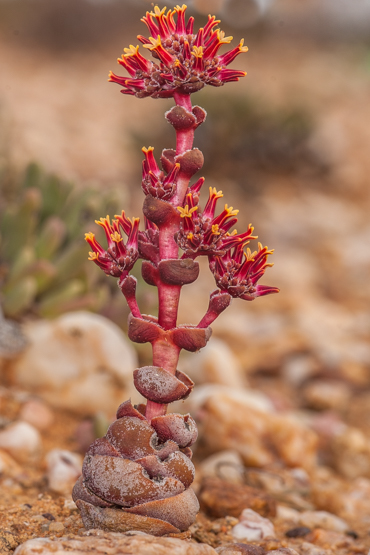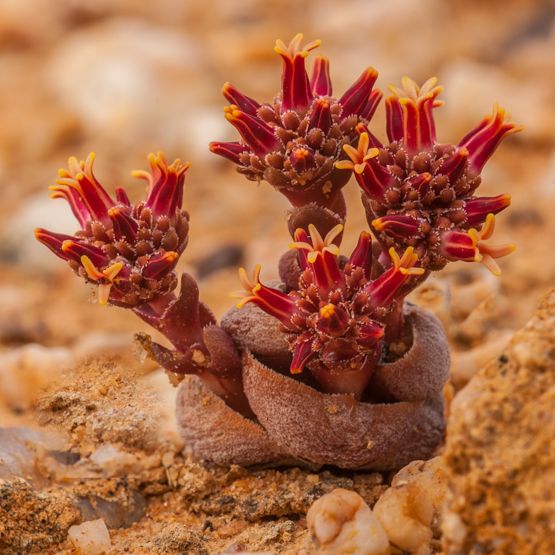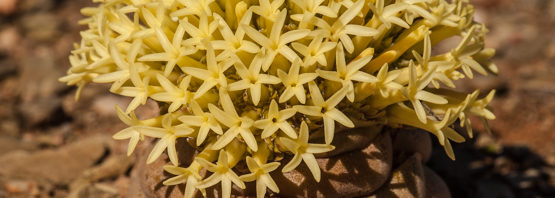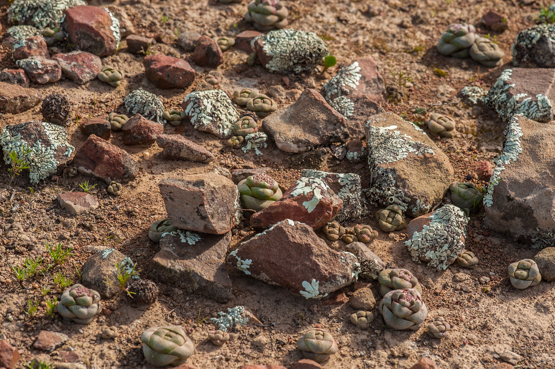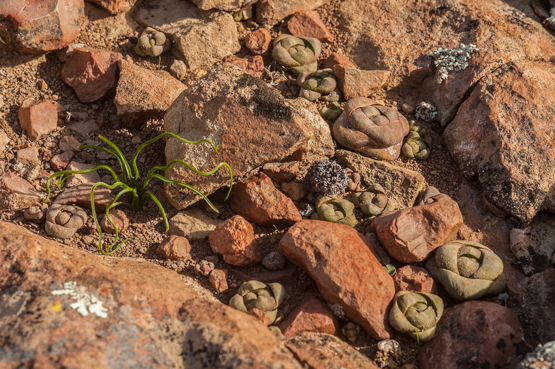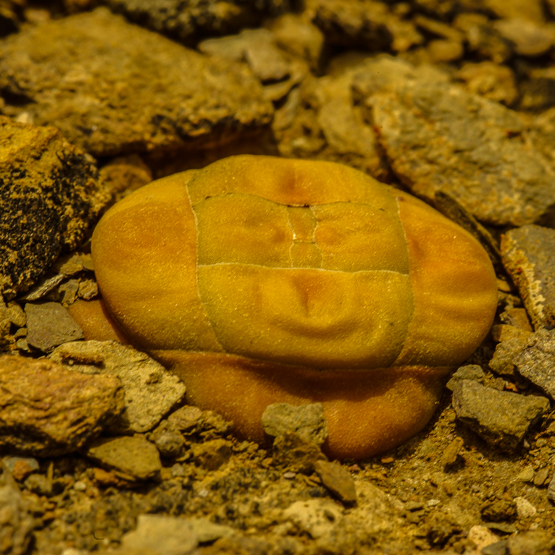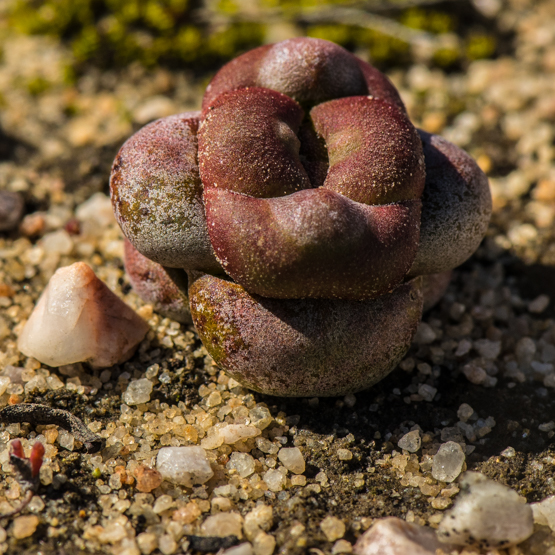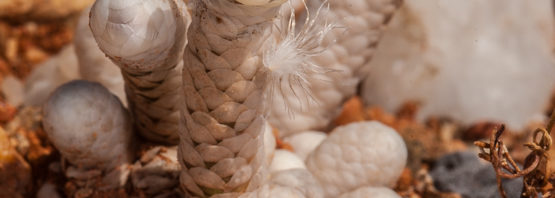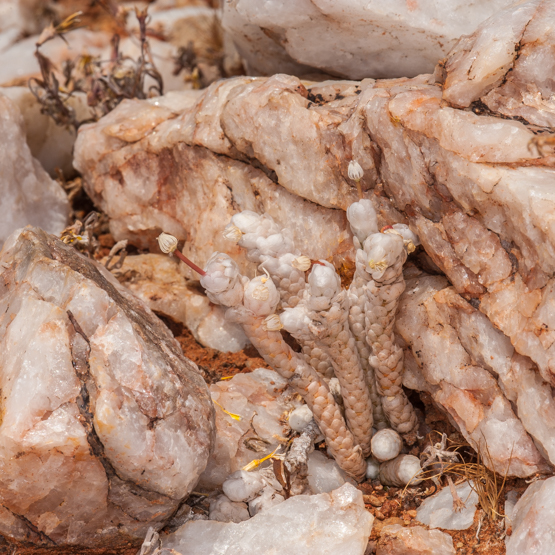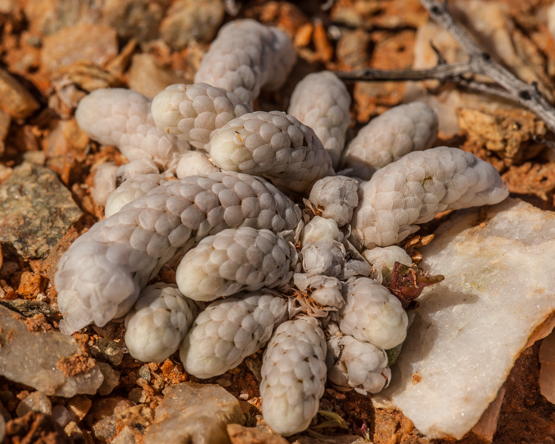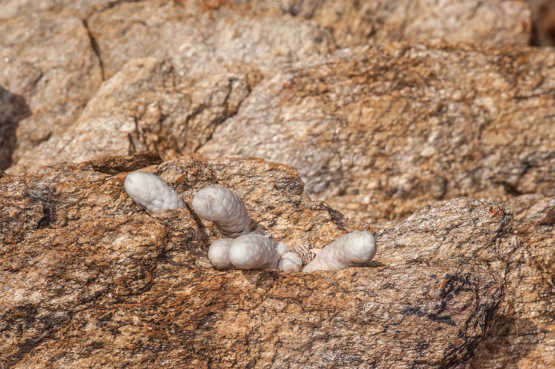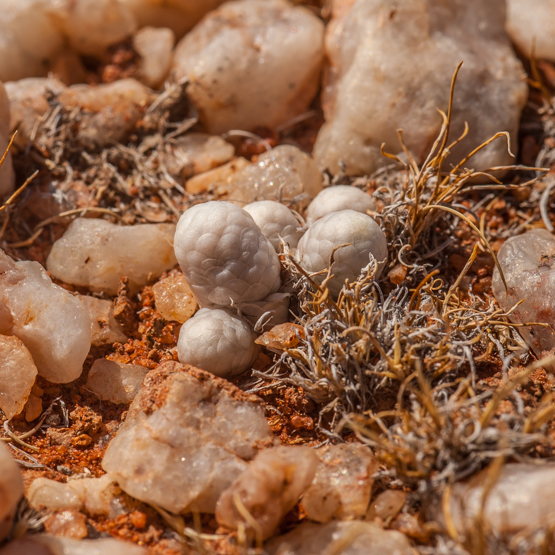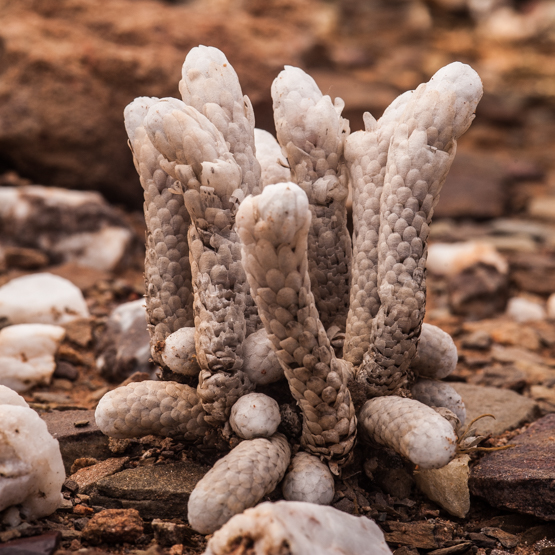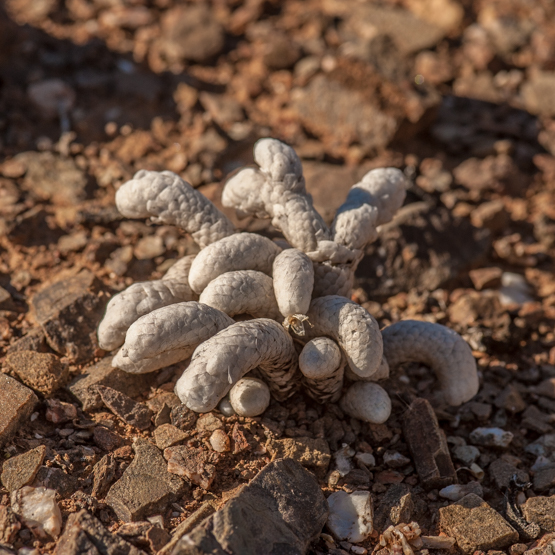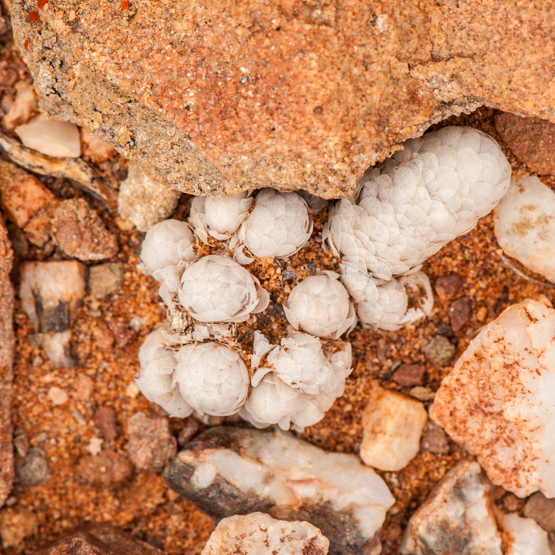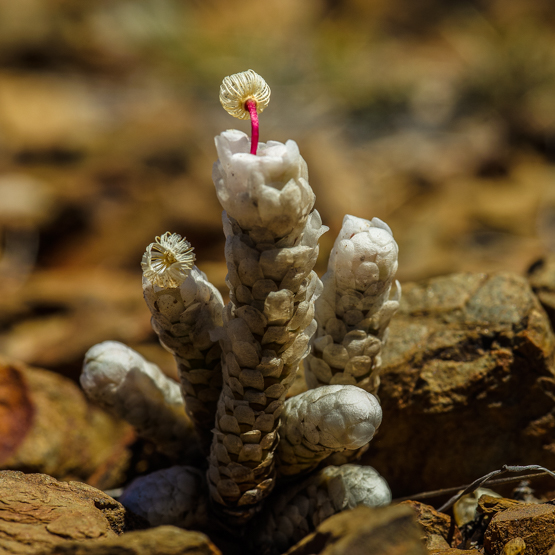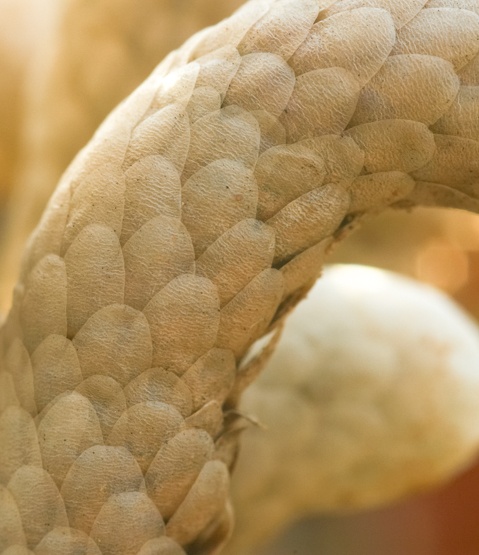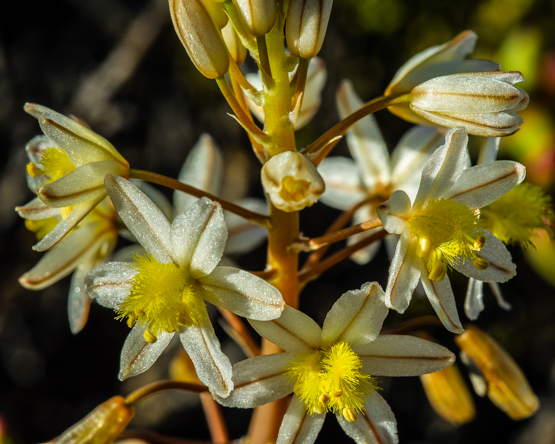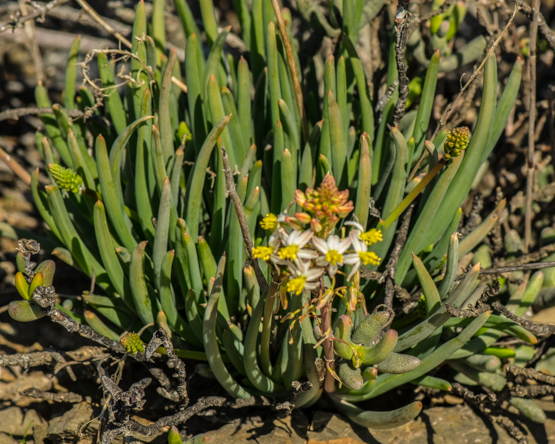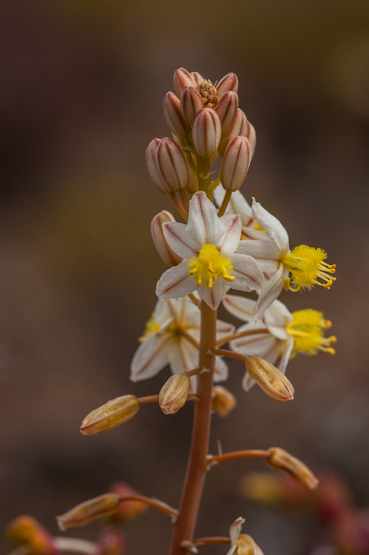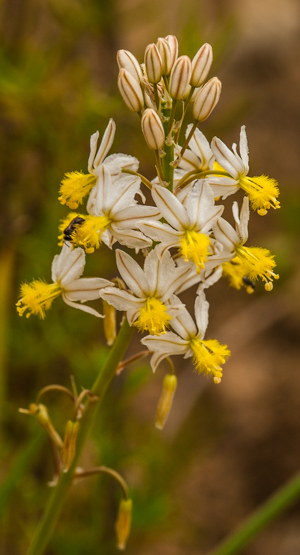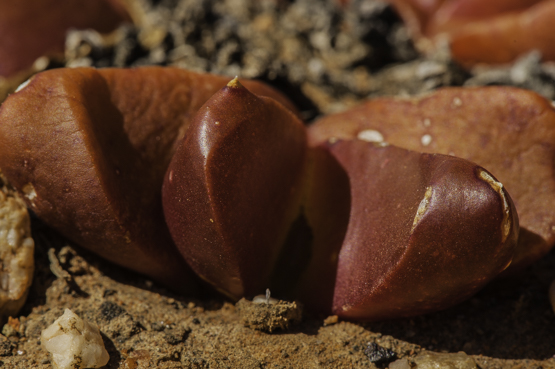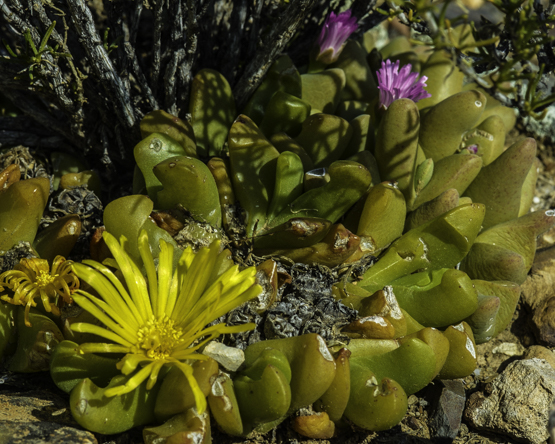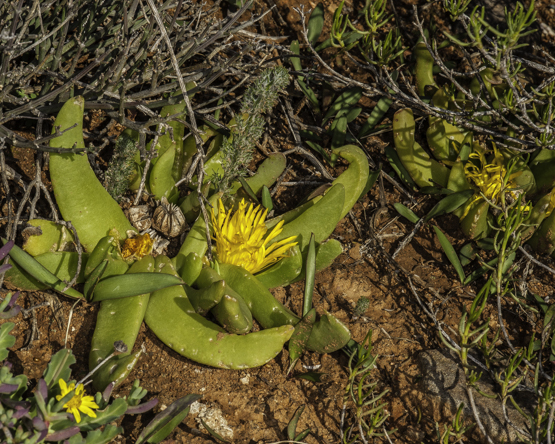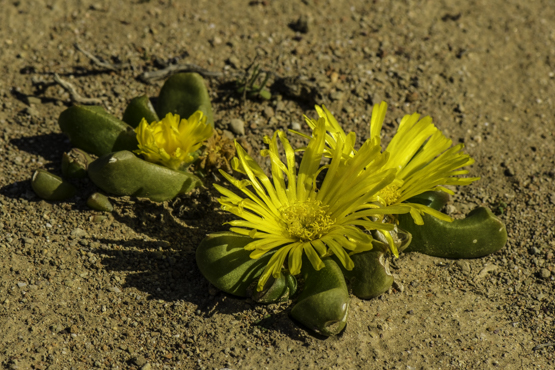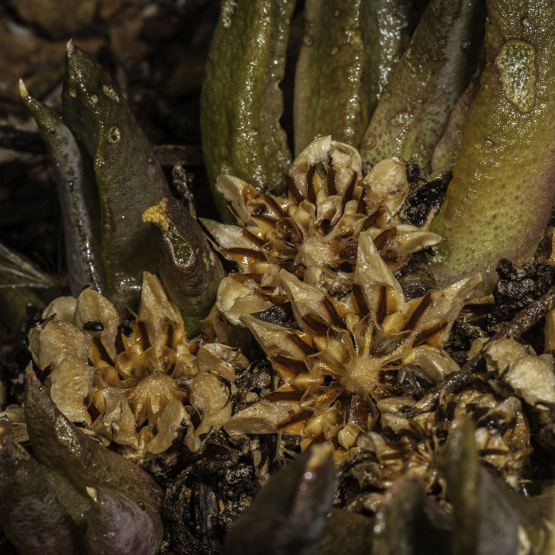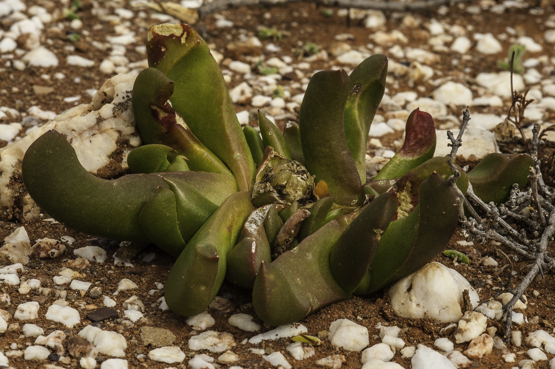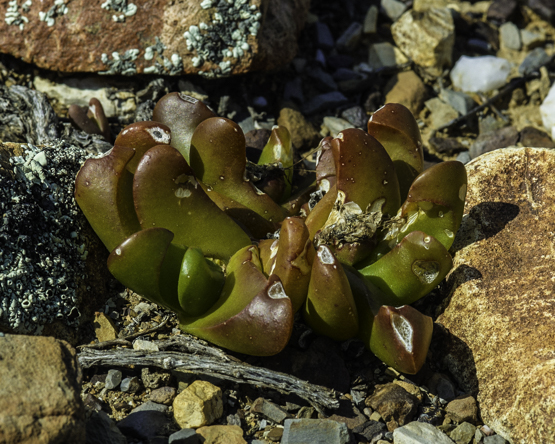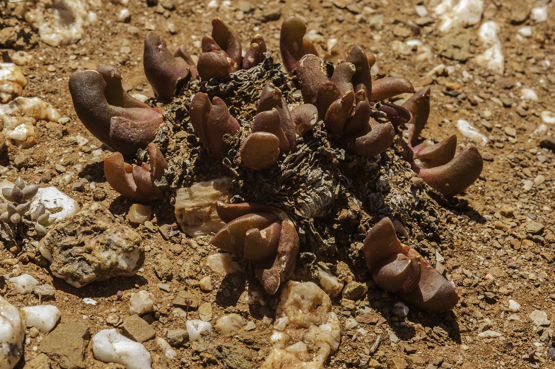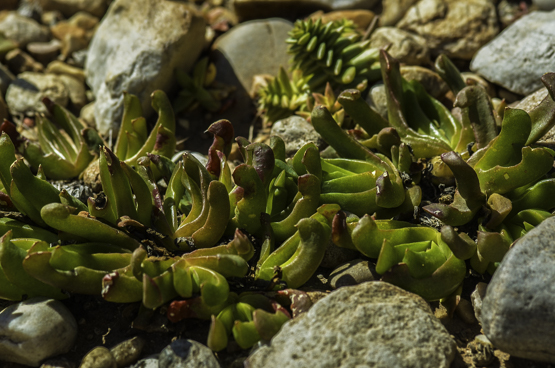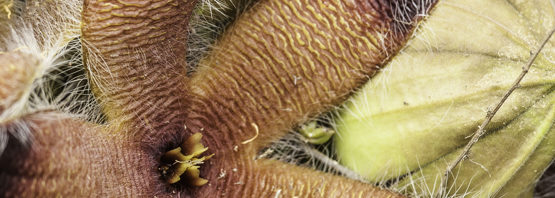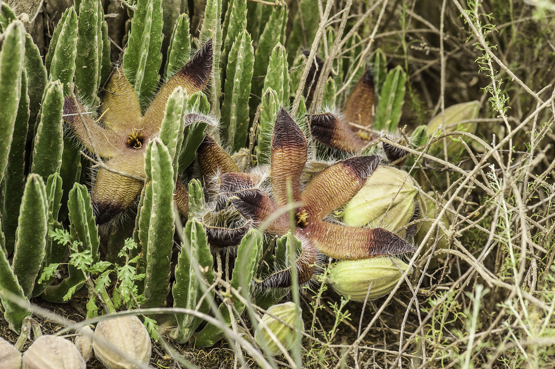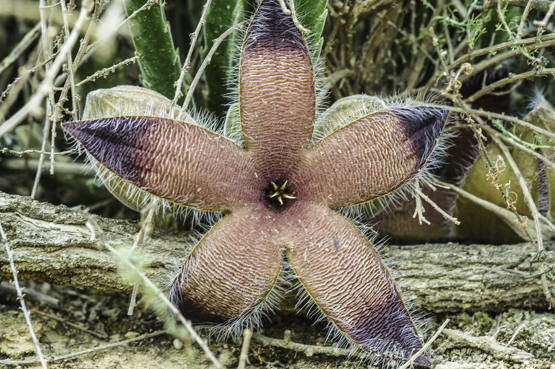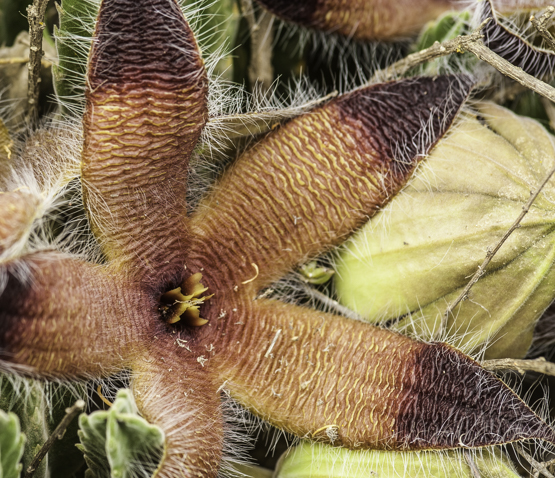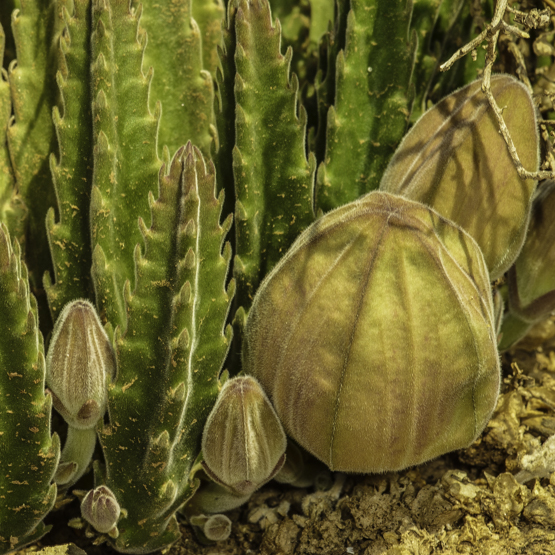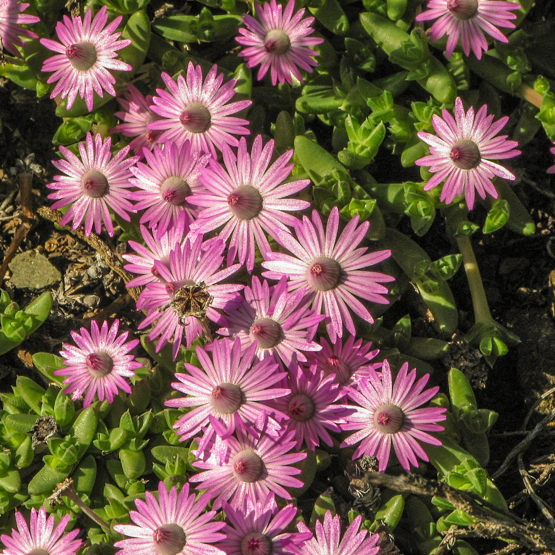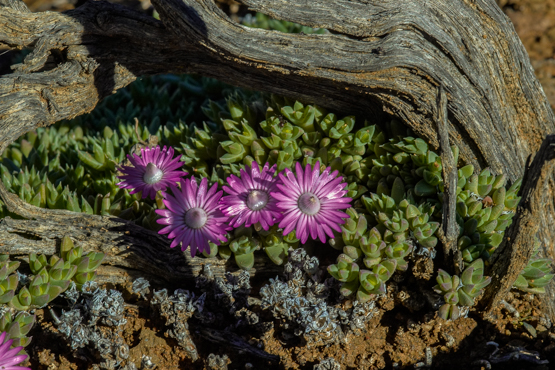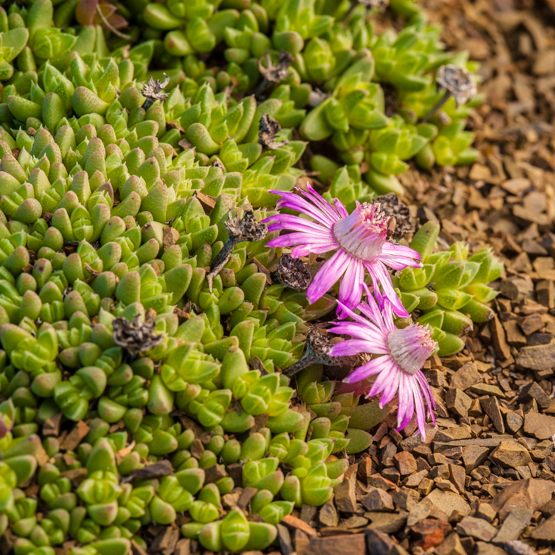And here some pictures of subsp. prolifera.
Category: succulents
Crassula columnaris (part 1 of 3)
It takes plants of this species 5-10 years to reach maturity and become columnar.
There are 2 subspecies, each with a number of local forms.
The plants are often locally abundant on gentle slopes and in depressions (often with quartz gravel); sometimes they also occur in shallow soil on rocky outcrops.
The flowers are white, pale yellow (often tinged red) or rarely almost red.
Subsp. columnaris is usually unbranched, with columns 2-3.5 cm wide, often as long as broad.
The inflorescence is swollen, rounded to flat and appears from May to September
The plants are monocarpic, which is another way of saying they die after flowering.
They are found in most parts of the little Karoo, the adjoining western Great Karoo and towards Calvinia.
Subsp. prolifera reaches a height of 3-10 cm when in flower and forms several short branches at the base. Often these branches easily break off and take root.
The inflorescence is more or less branched and appears from July to October. After flowering, the plants often regenerate from the lower branches.
This subspecies occurs in most parts of Namaqualand and adjoining areas of Bushmanland and southwestern Namibia.
The four pictures all show ssp. columnaris.
Avonia papyracea (part 2 of 2)
Avonia papyracea (part 1 of 2)
Even if one has no knowledge of Latin, it is probably easy to understand that papyracea means papery. This refers to the thin, white scales that cover the stems.
These scales are in fact modified stipules: outgrowths of the base of the leaf stalk. By reflecting and diffusing light, they act as sunshades. This effect, combined with controlled aeration*, reduces evaporation. The scales are also able to trap dew.
*It has been noted that in hot, dry conditions the scales tightly overlap each other like roof tiles, whereas in cooler and therefore damper weather they can open out to some extent so that the leaves are more exposed.
As Gordon Rowley in “Anacampseros, Avonia, Grahamia” (1995) remarks, it seems surprising that such an efficient adaptation has, apparently, evolved only once.
The scales are about 5 mm long and wide and hide the minute leaves.
The stems are usually about 5-8 cm long and 0.7-1 cm thick, arising from a thickened tuber. As in other Avonia species, the stems that carry flower buds grow more or less horizontal, but become erect on the day of flowering and stay that way until the seeds have been dispersed.
The scented flowers are creamy white and appear in late spring and early summer.
There are two subspecies: subsp. papyracea occurs throughout the Little Karoo and is also found in the Great Karoo, whereas subsp. namaensis occurs in southern Namibia, the Richtersveld and Bushmanland. Both subspecies seem to feel most at home amongst white quartz pebbles.
According to the literature the main difference between the two is that in the first one, the edges of the scales are entire (without any teeth or other incisions) and in the second one saw-edged to toothed.
The following pictures show plants of subsp. papyracea.
Bulbine triebneri
Until very recently I had never heard or seen this name; it is not even mentioned in the Illustrated Handbook of Succulent Plants (2001). Strangely enough I had seen plants of this species on several occasions, but nobody seemed to know what it was. According to some people it was a white-flowered form of B. frutescens, while others said it had been described “not long ago” as a new species. Searching through the literature did not yield concrete information either.
Ten days ago I was on a fieldtrip with members of CREW, the Custodians of Rare and Endangered Wildflowers (crew@sanbi.org.za). In the plain between Ouberg and Anysberg we came across several specimens of a white-flowered Bulbine and Marion Maclean casually mentioned the name Bulbine triebneri.
After returning home I found out that Ernst van Jaarsveld had described the species in 2001 as B. alba, but that in 2008 the new species was sunk into the older B. triebneri (Bothalia 38,1).
Of the over 70 species of Bulbine this is the only one with white flowers. It differs from its nearest relative, B. frutescens also by the soft, glaucous, more or less round leaves.
Plants are found in the Little Karoo and the southern Great Karoo, where it is locally abundant on shale ridges and scree. The species also occurs in the Eastern and Northern Cape and in southern Namibia.
In the Bothalia article it says: “The most interesting feature of this species is that the
flowers seemingly open only in the very late afternoon for two to three hours at most.”
In spite of this, the first of the pictures shown here was taken at 7.20 AM and the other three between 12.39 and 13.33 PM.
Bulbine triebneri
Until very recently I had never heard or seen this name; it is not even mentioned in the Illustrated Handbook of Succulent Plants (2001). Strangely enough I had seen plants of this species on several occasions, but nobody seemed to know what it was. According to some people it was a white-flowered form of B. frutescens, while others said it had been described “not long ago” as a new species. Searching through the literature did not yield concrete information either.
Ten days ago I was on a fieldtrip with members of CREW, the Custodians of Rare and Endangered Wildflowers (crew@sanbi.org.za). In the plain between Ouberg and Anysberg we came across several specimens of a white-flowered Bulbine and Marion Maclean casually mentioned the name Bulbine triebneri.
After returning home I found out that Ernst van Jaarsveld had described the species in 2001 as B. alba, but that in 2008 the new species was sunk into the older B. triebneri (Bothalia 38,1).
Of the over 70 species of Bulbine this is the only one with white flowers. It differs from its nearest relative, B. frutescens also by the soft, glaucous, more or less round leaves.
Plants are found in the Little Karoo and the southern Great Karoo, where it is locally abundant on shale ridges and scree. The species also occurs in the Eastern and Northern Cape and in southern Namibia.
In the Bothalia article it says: “The most interesting feature of this species is that the
flowers seemingly open only in the very late afternoon for two to three hours at most.”
In spite of this, the first of the pictures shown here was taken at 7.20 AM and the other three between 12.39 and 13.33 PM.
Glottiphyllum depressum (part 2 of 2)
Glottiphyllum depressum (part 1 of 2)
In spite of its name, the leaves of this plant are not always lying flat on the ground. This does not come as a complete surprise in a species which is probably more variable in its leaf characters than any other Glottiphyllum. This variability is reflected in the long list of synonyms. It seems likely that the very wide distribution of this species (compared to its siblings) is at least partly responsible for the wide range of characters.
In each pair, the leaves are slightly different in size (in the seedling state this difference does not exist); they may be up to 8.5 cm long and the tips often have a more or less distinct hook.
As in all other Glottiphyllums (apart from some albinos) the flowers are yellow; they appear in mid winter (July-August).
The plants occur from the southern Ceres Karoo through the Little Karoo to Humansdorp and are often the only Glottiphyllum in the area. They normally grow under shrubs in shaley sandstone or on loamy soils.
The first picture shows no less than 4 species apart from G. depressum:
Antegibbaeum fissoides, Adromischus fiicaulis ssp. marlothii, Crassula tecta and C. congesta ssp. laticephala.
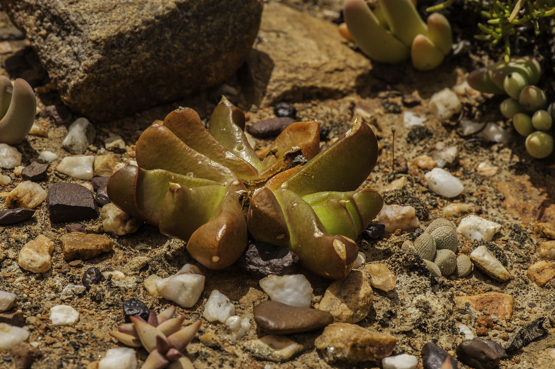
Stapelia grandiflora var. grandiflora
Because they may form large clumps to over a meter in diameter, plants of this species are often quite conspicuous in the field. They occur widespread in the Great Karoo and from Calitzdorp to the Eastern Cape and into the Free State, usually among bushes on lower stony slopes or under trees on flats.
The stems are up to 30 cm long. As the name implies, the flowers are often quite big too (mostly 8-15 cm, but sometimes up to 22 cm in diameter); they are usually silky hairy and appear mainly from March through May. The buds are rounded, which is typical for this variety (see last picture, showing a plant in cultivation).
The first 3 pictures were made near the Calitzdorp Dam, 6 April 2010.
Antimima pygmaea (part 1 of 2)
There are not many plants that look better or more interesting in the resting state than during active growth, but this species is certainly one of them.
The plants form low, densely branched mats to 15 cm in diameter.
The leaf pairs are dimorphic. One pair is almost fused almost completely, to 5 mm tall and 3 mm wide, developing into a conical body which turns into a dry sheath protecting the subsequent leaf pair during the dry period. These white bodies become slashed with time and are typical for the species.
The plants occur on shaly slopes in a smallish area between Worcester and Laingsburg.
Irrespective of the statement in the first sentence of this post, the plants are quite cute when in flower. The flowers are up to 18 mm across and appear in winter (July-August).
